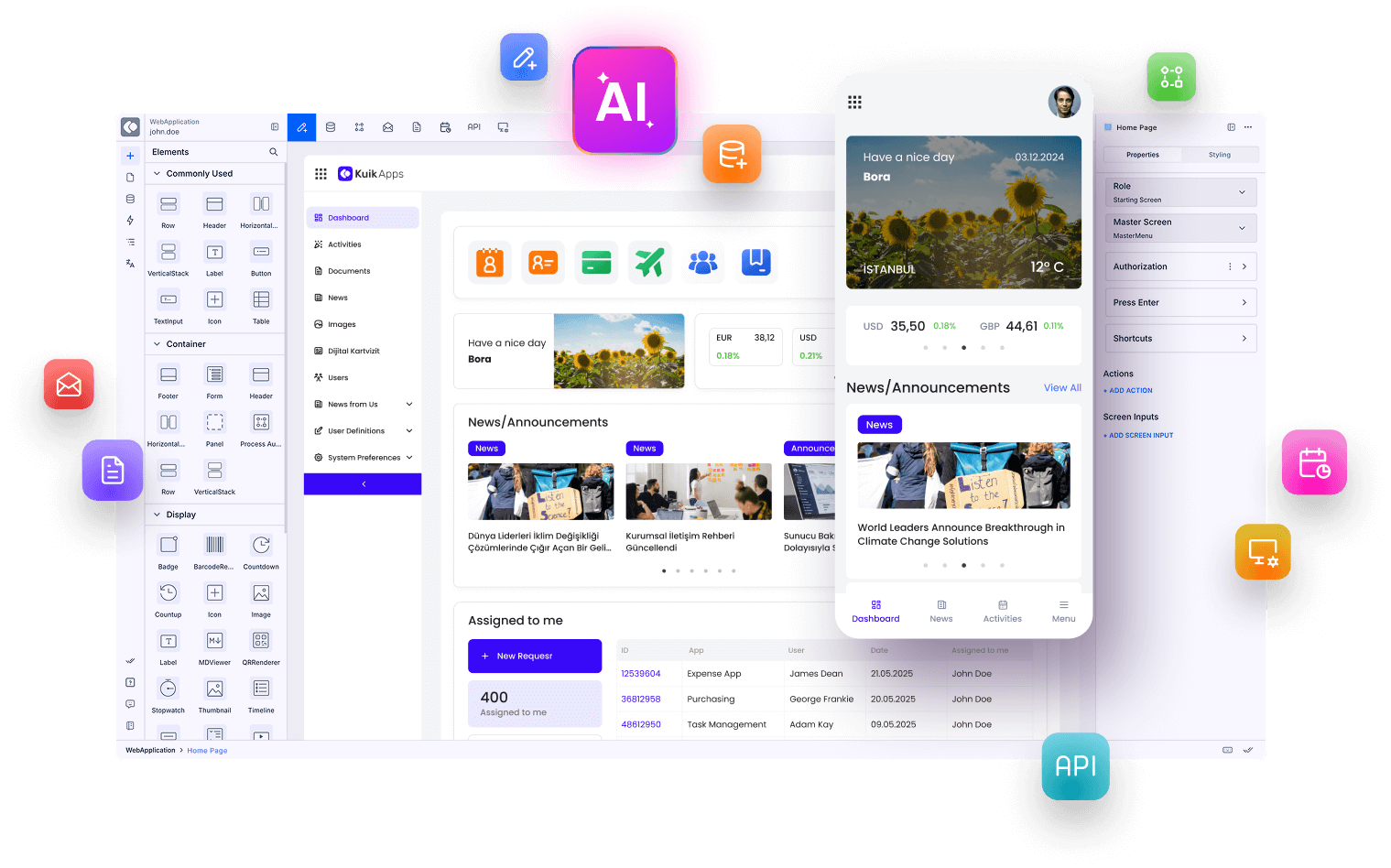Well, low-code is certainly a way to go as far as workers are concerned — almost half of them would like to build their own business applications to be more productive, which is only possible for non-IT teams with low or no-code software development platforms.
So, how can low-code development platforms like Kuika help you boost remote work productivity?
Low code paves the way for custom software solutions
One of the key benefits of low-code platforms is that they can help reduce the amount of time and effort required to develop and deploy custom software solutions. This can be especially important in a remote work environment, where teams may have unique requirements to optimize business practices.
However, it is not easy for IT departments to grasp everyone’s requirements and find an all-in-one solution that encapsulates your team’s needs. Even if they could do it, it would create a huge IT backlog which is quite costly, given the amount of work IT specialists would have to deal with.
While it is essential that workers have the ability to build tools that are tailored to their unique needs in a remote environment, those tools must be flexible for teams to adapt to ever-evolving conditions. This is where low-code comes in.
Thanks to low-code software development platforms, when your team lacks technical knowledge, you can build applications based on your needs without external help from IT. This way, it also becomes possible for you to create your tools however you want. As low-code requires no technical know-how to build software, your team can also tweak the applications that you use to fit them in with effective requirements.
Collaboration and communication made easy and effective
One of the most obvious problems posed by remote work is effective collaboration and communication. As remote workers do not have the same level of access to information and resources as on-site workers, they may find it challenging to communicate and coordinate effectively. This, in turn, can lead to misunderstandings and delays.
With low-code development platforms, you can build an omnichannel cloud-based solution for your internal communication needs. This centralized application makes it easy for everyone to stay on top of the collective agenda. Low-code software development platforms also offer built-in tools for creating messaging systems, document sharing and collaboration, and project management.
Easier scalability thanks to the agility of low-code platforms
Low-code platforms are agile in nature. Tools built with low-code are easy to modify. In case of any unexpected change such as a need to scale up, they can adapt accordingly. This is why with low-code, your team is more responsive to changes, resulting in a more efficient workflow.
For example, in the case of a sudden increase in demand, your team can use a low-code software building platform to create an application or a website in a short amount of time. This also decreases the workload of IT departments, which is evident as 79% of them say that low-code can improve job satisfaction!
As low-code platforms have functional built-in tools and components, IT teams do not have to waste time and resources writing hard code. Instead, they can utilize what the low-code platforms offer to efficiently create the required tool, thereby quickly responding to changing business conditions.
Low-code software building platforms also provide cloud-based, omnichannel solutions for collaboration, which is why your team has one less thing to worry about when it comes to effective project management.
Use cases for low-code automation
Thanks to low-code automation, your team can save time and effort by not having to waste resources on repetitive and time-consuming tasks. This aspect of automation also helps prevent team members from burnout as it eliminates the tasks that drain their creative juice the most.
There’s one more thing to consider when it comes to automating manual repetitive processes — it eliminates the human factor, which constitutes the risk of errors. Here are some solid use cases for it:
Automation of business processes
You can automate countless repetitive business processes to save time and focus on higher-value tasks. Some of them include invoicing, data entry, employee onboarding, and financial reporting. Automating them not only gives you time but also eliminates errors.
Automation of data analysis
With low code, you can build custom tools for data analysis and reporting. This can help your teams analyze large volumes of data to generate reports and insights, which would otherwise take much longer. %33 of the respondents included in a survey by Statista state that their organization uses low code for data modeling and visualization.
Automation of customer service
You can build automated portals for customer service, which can provide your customers with an easier experience and your service assistants with more time. Therefore, you can offer a more satisfying experience to your customers.
Automation of testing and quality assurance
You can build tools that automate testing and QA assurance processes. This can help your teams easily detect any flaws that would impact users before implementing new features.
Streamline remote work with low-code
Low-code building platforms are here to empower your teams. They can significantly increase the productivity of remote workers with countless use cases, such as custom applications, communication & coordination solutions, and automation at every step of your business.
Sign up to Kuika today, and start harnessing the power of low code for your business!
















